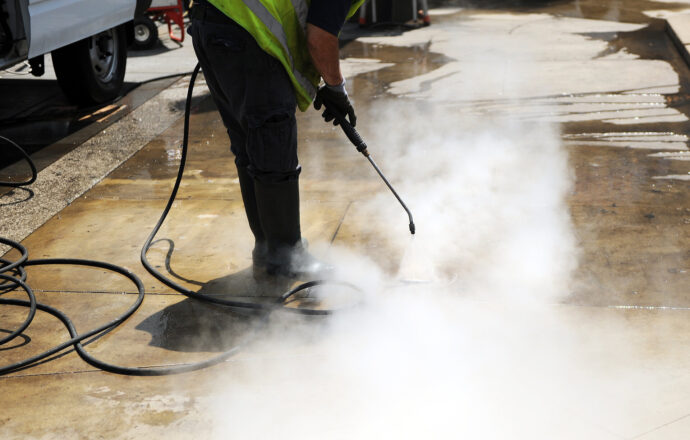Dry ice blast cleaning gently cleans a wide variety of surfaces. For example, ivy on house facades, chewing gum on the sidewalk and many more stains can be removed by cleaning with dry ice.
Remove dirt with dry ice blasting
From paint to weathering to even graffiti, dry ice blasting, also known as dry ice cleaning, removes a wide variety of stains and can be used on a wide variety of surfaces. All this is done without damaging the surface. This method is very popular in various fields.
You can remove dirt from the interior and underbody of your car and climbing plants from the exterior walls of your house. Dry ice blasting is also a useful tool in the construction and woodworking industries. Here’s what dry ice blast cleaning really is, how it works.
Who or what is dry ice really?
Dry ice is a solid state of carbon dioxide (CO2). It is the only ingredient in dry ice. At a temperature of minus 78.5 degrees Celsius, this substance then changes from the solid to the gaseous state. Dry ice blasting leaves no solid or liquid particles behind.
How does cleaning with dry ice work?
But how do you actually clean a surface with dry ice? Dry ice cleaning uses compressed carbon dioxide pellets. Dry ice cleaning is a method of compressed air blasting. Using a specially designed dry ice blasting machine, dry ice is blasted at very high pressure onto the surface to be cleaned.
Dry ice particles quickly hit the object. Due to the rapid temperature difference, the layer cools down considerably and becomes brittle. This creates cracks in this one layer, where particles settle and change to a gaseous state upon collision. The layer to be removed flakes off when the carbon dioxide volume increases sharply.
When used as intended, the base surface is not scratched, so no wear occurs. For example, dirt can be gently removed from the facade without damaging the facade insulation. The duration of dry ice blast cleaning depends entirely on the degree of soiling and the effort required for the cleaning operation. Depending on the situation, the procedure can take between a few minutes, hours and even days.
What are the applications for dry ice blasting?
Dry ice blasting is common in many fields. Vehicles, wooden surfaces, industrial products, residential elements, etc. The house facade can also be cleaned with dry ice. Electronic devices can also be cleaned, as no liquid is released during processing. at home, for example, remove paint residues from the facade before applying new paint. In the hobby sector, oil and other residues can be removed as part of a dry ice engine wash. Surface material varies accordingly are here grease, plant residues, paints, weathering, varnishes, burn marks, oils and glue residues to mention.
What is the storage of dry ice like?
Your gas supplier delivers dry ice in suitable containers. Ice can be stored in these insulated containers for up to 5-10 days without loss of quality. After this time, the ice begins to harden, which greatly reduces blasting efficiency. After a few more days, the ice evaporates back to gas.
After the blasting process is finished, the remaining ice pellets should be removed from the machine and put back into a dry ice container.
For more information: https://white-lion.eu/en/dry-ice-cleaning/dry-ice-blasting-procedure/
Source:
joserpizarro – stock.adobe.com
Read more:


